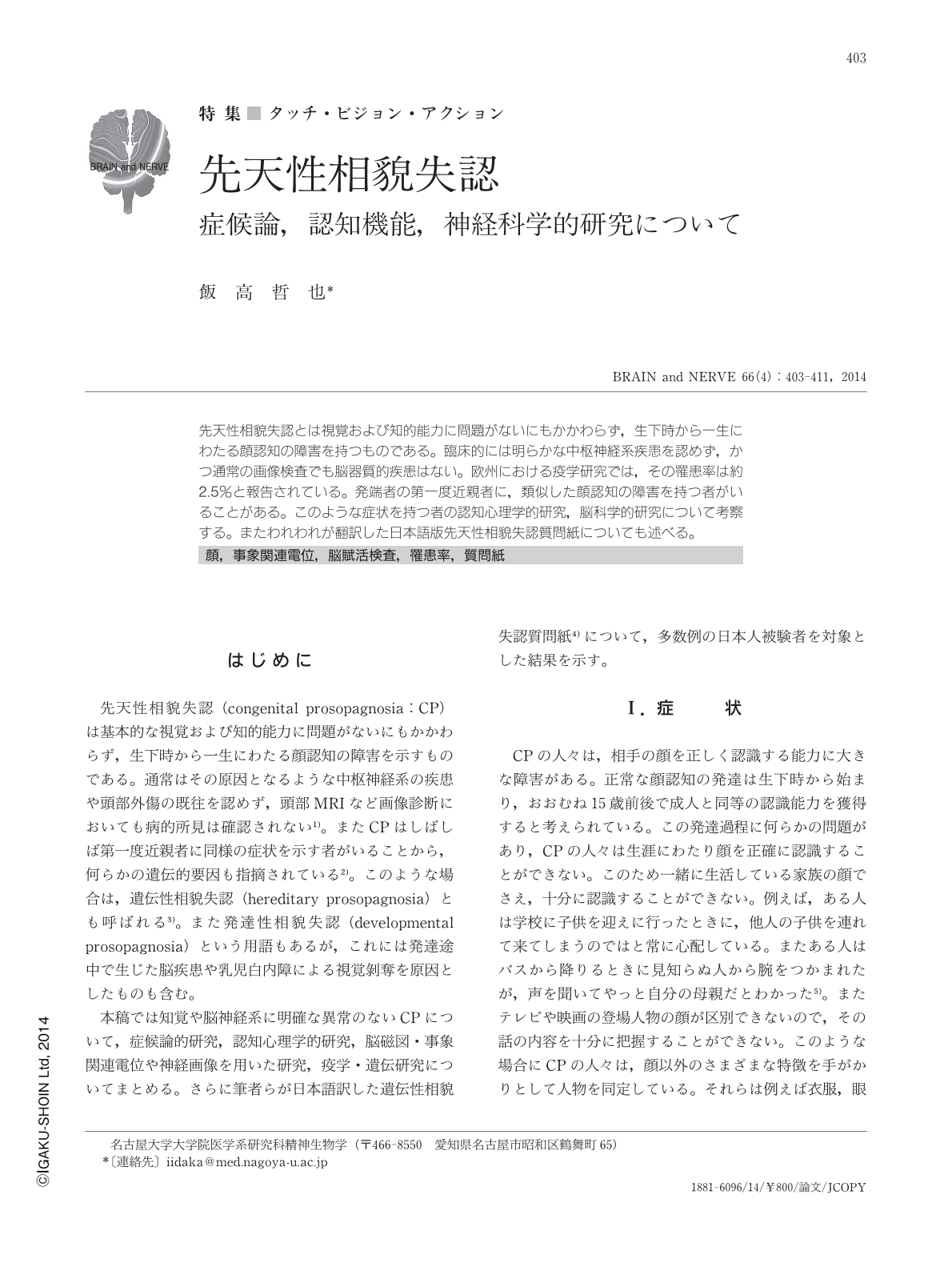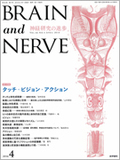Japanese
English
- 有料閲覧
- Abstract 文献概要
- 1ページ目 Look Inside
- 参考文献 Reference
先天性相貌失認とは視覚および知的能力に問題がないにもかかわらず,生下時から一生にわたる顔認知の障害を持つものである。臨床的には明らかな中枢神経系疾患を認めず,かつ通常の画像検査でも脳器質的疾患はない。欧州における疫学研究では,その罹患率は約2.5%と報告されている。発端者の第一度近親者に,類似した顔認知の障害を持つ者がいることがある。このような症状を持つ者の認知心理学的研究,脳科学的研究について考察する。またわれわれが翻訳した日本語版先天性相貌失認質問紙についても述べる。
Abstract
Congenital prosopagnosia (CP) refers to lifelong and severe impairment of face processing, which is apparent from birth, despite intact visual and intellectual abilities. Usually, individuals with CP do not exhibit brain lesions or neurological disorders that account for their specific impairment. An epidemiological survey revealed that the prevalence rate of CP was approximately 2.5% in a young Caucasian population. CP frequently runs in families, suggesting a genetic component in this disturbance. Detailed neuropsychological investigations demonstrated that individuals with CP show reduced performance in face tasks including famous face recognition, face matching, and encoding/retrieval of novel faces. In contrast, they can judge facial expression and eye gaze almost as well as healthy controls. These results suggest an impairment of holistic processing of faces in individuals with CP. Neurophysiological investigation using ERP showed that individuals with CP, as a group, had reduced voltage of the N170 component, which is a hallmark of face processing in the temporal lobe. However, there were large variations in the results of N170 among individuals with CP. Structural MRI showed that the impairments could be due to reduced volume of grey matter and microstructure of white matter in a part of the temporal lobe. Studies using fMRI and face tasks revealed mixed results with regard to face-selective activation in the fusiform gyrus. These findings indicate the heterogeneity of CP, and further investigation is needed to clarify neurodevelopmental substrates of face processing. Results from normative data obtained using the Japanese version of a questionnaire for screening of hereditary prosopagnosia is presented.

Copyright © 2014, Igaku-Shoin Ltd. All rights reserved.


